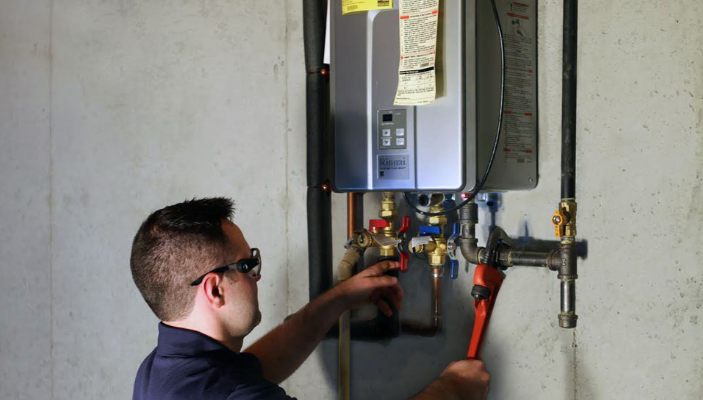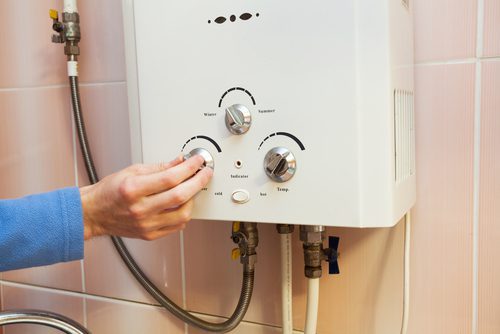We've unearthed this great article about Tips on Maintaining a Water Heater down the page on the net and figured it made perfect sense to relate it with you in this article.

Hot water is necessary for day-to-day comfort, whether it's for a refreshing shower or cleaning dishes. To guarantee your hot water system runs successfully and lasts longer, normal maintenance is vital. This short article offers functional ideas and insights on just how to keep your home's hot water system to stay clear of interruptions and pricey repair work.
Introduction
Keeping your home's hot water system may seem complicated, yet with a few simple actions, you can guarantee it runs smoothly for years to come. This guide covers every little thing from understanding your hot water system to do it yourself upkeep suggestions and understanding when to call in professional assistance.
Relevance of Maintaining Your Warm Water System
Routine upkeep not only prolongs the life-span of your warm water system but likewise guarantees it runs efficiently. Ignoring upkeep can lead to lowered effectiveness, higher energy costs, and even early failure of the system.
Signs Your Hot Water System Demands Maintenance
Recognizing when your hot water system requires focus can avoid significant issues. Watch out for signs such as irregular water temperature level, unusual sounds from the heater, or rustic water.
Recognizing Your Hot Water System
Prior to diving right into maintenance jobs, it's useful to recognize the fundamental components of your warm water system. Typically, this consists of the water heater itself, pipelines, anode rods, and temperature level controls.
Regular Monthly Upkeep Tasks
Regular monthly checks can help catch small concerns before they escalate.
Purging the Hot Water Heater
Purging your water heater eliminates debris build-up, improving efficiency and extending its life.
Monitoring and Replacing Anode Rods
Anode rods protect against corrosion inside the storage tank. Inspecting and replacing them when worn is critical.
Examining and Readjusting Temperature Setups
Adjusting the temperature level setups guarantees ideal efficiency and safety.
Do It Yourself Tips for Upkeep
You can perform a number of upkeep jobs yourself to keep your warm water system in leading problem.
Checking for Leakages
Consistently evaluate pipes and connections for leakages, as these can cause water damages and greater expenses.
Checking Pressure Relief Valves
Evaluating the pressure relief valve ensures it functions correctly and prevents excessive stress buildup.
Insulating Pipes
Shielding warm water pipelines minimizes warmth loss and can conserve energy.
When to Call a Professional
While DIY maintenance is useful, some concerns call for specialist know-how.
Complicated Problems Calling For Professional Assistance
Examples include major leaks, electrical problems, or if your hot water heater is constantly underperforming.
Routine Expert Maintenance Perks
Expert upkeep can include extensive assessments, tune-ups, and ensuring conformity with security standards.
Verdict
Normal maintenance of your home's hot water system is crucial for effectiveness, long life, and expense financial savings. By following these pointers and knowing when to look for professional assistance, you can make certain a reliable supply of hot water without unforeseen interruptions.
How to Maintain an Instant Hot Water Heater
Before tinkering with your hot water heater, make sure that it’s not powered on. You also have to turn off the main circuit breaker and shut off the main gas line to prevent accidents. Also turn off the water valves connected to your unit to prevent water from flowing into and out of the appliance. 2. When you’re done, you have to detach the purge valves’ caps. These look like the letter “T” and are situated on either side of the water valves. Doing so will release any pressure that has accumulated inside the valves while at the same time avoid hot water from shooting out and burning your skin. 3. When the purge valves’ caps are removed, you have to connect your hosing lines to the valves. Your unit should have come with three hoses but if it didn’t, you can purchase these things from any hardware or home repair shops. You can also get them from retail stores that sell water heating systems. Read the user’s manual and follow it to complete this task properly. When the hosing lines are connected, open the purge port’s valves. 4. You should never use harsh chemical cleaners or solutions when cleaning your unit. Make use of white vinegar instead. It should be undiluted and you’ll probably use about 2 gallons. 5. Now flush your water heater. This task should probably take about 40 minutes. We can’t give you specific directions for this because the procedure is carried out depending on the type, model and brand of your heater. With that being said, refer to the user’s manual. 6. When you’re done draining the unit, you have to turn off the purge port valves again. Remove the hosing lines that you earlier installed on each of the water valves. Put the valve caps (purge port) back in their respective places and be very careful so as not to damage the rubber discs that are found inside these caps. 7. Now that everything’s back in place, check your user’s manual again to find out how to reactivate your water heating system. 8. Once it is working, turn one of your hot water faucets on just to let air pass through the heater’s water supply pipes. Leave the tap on until water flows smoothly out of it. https://www.orrplumbing.com/blog/2014/september/how-to-maintain-an-instant-hot-water-heater/

As a fervent person who reads about Tips on Maintaining a Water Heater, I think sharing that post was worth the trouble. Do you know about somebody else who is curious about the niche? Feel free to promote it. Many thanks for going through it.
Request Your Service